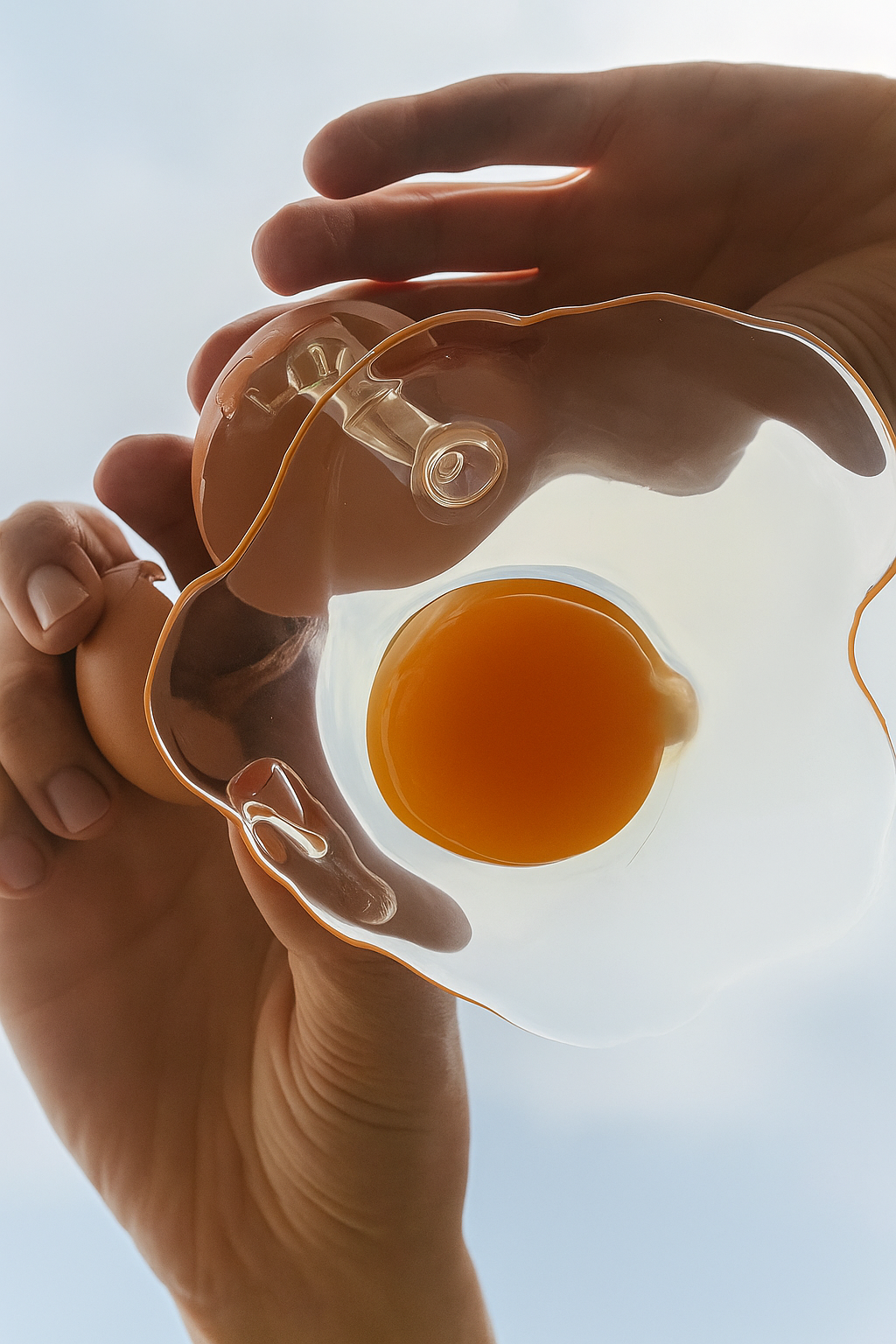Food Photography From Below on Invisible Glass
Generate high-end food visuals from a unique bottom-up perspective. Ingredients are placed or broken onto a glass surface and viewed from underneath. The glass is invisible, and the focus is on realistic lighting, transparency, and fluid motion. Perfect for editorial food scenes, clean branding visuals, or scientific-style captures.
Prompt
A hyper-realistic image of a raw egg being cracked open on a clean glass surface, viewed from directly underneath. The camera looks upward through the transparent glass. The eggshell is held above by two human hands, seen from below, slightly blurred by the glass and egg white.
The egg is mid-break — the yolk and egg white are beginning to fall and spread out onto the glass. The egg white is glossy, perfectly clear, and dripping down naturally, with smooth curves and thin trails, like melted glass. The yolk is vibrant golden-yellow, but semi-transparent with subtle inner swirls and soft glowing light. The motion is fluid and lifelike — you see the flow of the egg just as it lands.
The lighting is bright, diffused, and top-down, creating strong highlights in the dripping egg white and gentle refraction through the yolk. Tiny droplets cling to the bottom of the glass, frozen mid-fall. The hands above are backlit, their fingers visible through the flowing egg.
The glass is invisible — no rim, no texture, no reflections. Only distortions from light and liquid. The background is soft white with a hint of gradient. No text. No other objects. Editorial food photography style. Minimal, clean, and cinematic.
Shot in 4K resolution. Shallow depth of field. High contrast. Macro-level clarity. Emphasis on realism, light behavior, and flow.
💡 Usage Tips
Actions
Category
Related Prompts
Craft Perfect Midjourney Prompts for Stunning Images
Generate precise, well-structured Midjourney prompts that produce consistent, hi...
High-Speed Soccer Sprint with Motion Blur
A vertical action shot of a male athlete sprinting after a soccer ball, captured...
Studio portrait
Generate a dramatic luxury-style studio portrait of a female model in profile wi...
